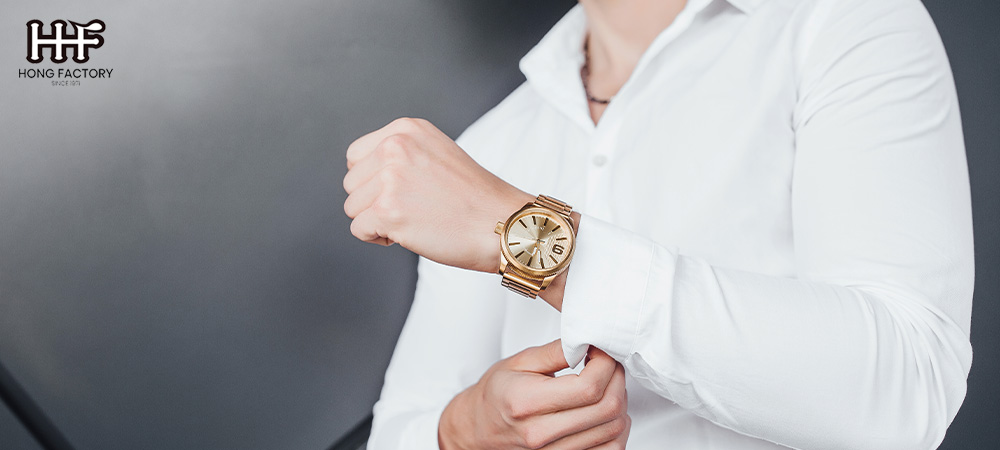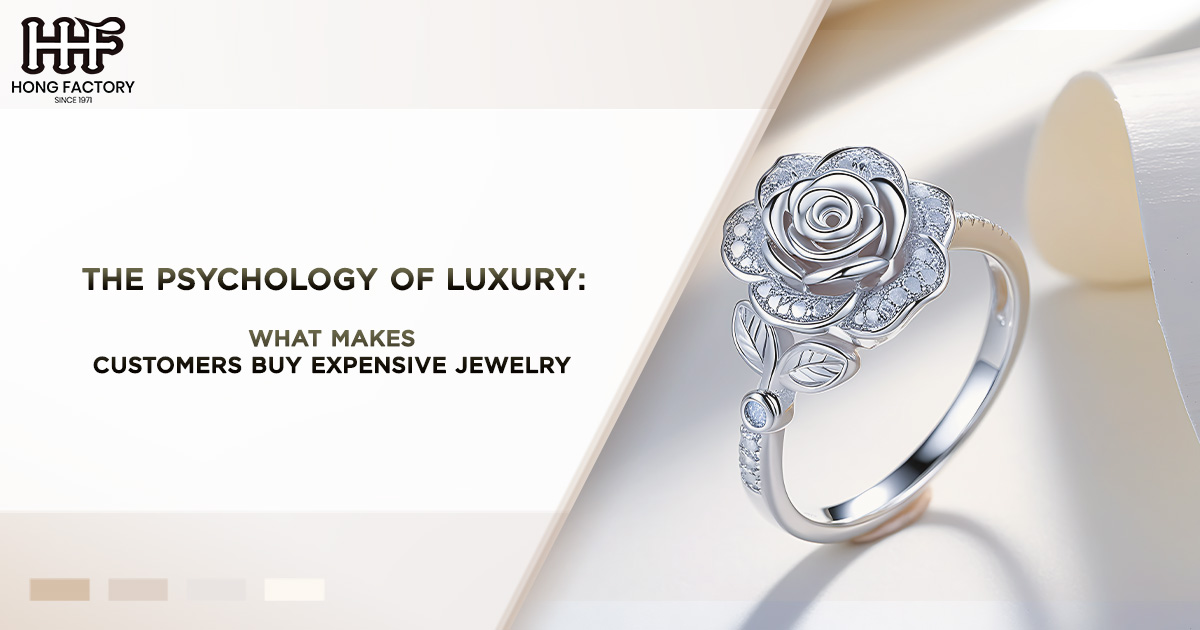Luxury has long been a symbol of status, accomplishment, and personal indulgence. Among the many luxury products available, fine jewelry occupies a unique position. Beyond its aesthetic appeal, it represents wealth, love, and timelessness. But what drives customers to spend thousands—or even millions—on a single piece of jewelry? What psychological mechanisms and marketing strategies influence this high-stakes buying behavior? In this article, we explore the psychology of luxury purchases, delving into consumer psychology, luxury marketing, and buying behavior through the lenses of psychological triggers, pricing psychology, customer journey, and decision factors.
Psychological Triggers – The Emotional Allure of Luxury
Psychological triggers play a powerful role in motivating customers to purchase expensive jewelry. Unlike functional products, luxury items are not bought for necessity—they fulfill emotional and psychological needs. Here are some of the key emotional triggers
1. Status and Social Identity
One of the primary drivers of luxury purchases is the desire to signal wealth, success, and social standing. Purchasing expensive jewelry serves as a form of conspicuous consumption, where buyers showcase their status through ownership of exclusive items. High-end brands like Cartier, Tiffany & Co., and Bvlgari capitalize on this by associating their products with prestige and power.
In consumer psychology, this is linked to social identity theory, which suggests that people derive part of their self-worth from group memberships. Owning luxury jewelry can elevate a buyer’s perceived social rank, aligning them with an elite group of affluent individuals.
2. Emotional Connection and Sentimentality
Jewelry often carries deep emotional significance. It is tied to celebratory moments like engagements, weddings, and anniversaries. The emotional connection to these occasions makes jewelry more than just a material possession—it becomes a tangible representation of love, commitment, or personal milestones. Luxury marketers tap into this sentimentality by crafting narratives that emphasize the emotional value of their pieces.
3. Scarcity and Exclusivity
People inherently value what is rare. When luxury brands create limited-edition collections or emphasize the uniqueness of their jewelry, they trigger a psychological response known as scarcity bias. The fear of missing out (FOMO) drives customers to make purchases, believing that owning such exclusive pieces will make them stand out.
Pricing Psychology – The Perceived Value of Expensive Jewelry
Pricing plays a pivotal role in the luxury market. Unlike mass-market goods, where low prices drive demand, luxury consumers often equate high prices with quality, exclusivity, and prestige.
1. The Role of Price as a Quality Signal
A high price tag can act as a psychological shortcut for customers, signaling superior craftsmanship, rare materials, and timeless design. For example, a diamond necklace priced at $50,000 is perceived to be more valuable and prestigious than one priced at $500, even if the difference in material quality is minimal. This is known as the price-quality heuristic in consumer psychology.
2. Decoy Pricing and Anchoring
Luxury brands often use pricing strategies to influence consumer choices. For instance, by placing an extremely high-priced item alongside moderately priced options, they make the latter seem more reasonable. This is referred to as the decoy effect or anchoring bias. A $100,000 necklace might make a $30,000 bracelet appear like a bargain, even though both are exorbitantly priced.
3. The Power of Round Numbers and Charm Pricing
Luxury brands rarely use charm pricing (e.g., $9.99) because it diminishes the perception of sophistication. Instead, they use round numbers (e.g., $20,000) to reinforce the idea of timeless elegance and enduring value. This subtle pricing psychology helps maintain the brand’s high-end image.

Customer Journey – The Path to a Luxury Purchase
The customer journey for buying luxury jewelry is vastly different from that of everyday products. It is a carefully orchestrated process designed to create a sense of exclusivity, trust, and emotional connection.
1. Awareness and Brand Perception
The journey begins with the customer becoming aware of the brand. Luxury marketers invest heavily in creating an aspirational image through storytelling, celebrity endorsements, and high-quality visuals. For example, Harry Winston’s advertising campaigns don’t just sell jewelry—they sell the dream of elegance, timelessness, and opulence.
2. Personalized Experience
In the consideration stage, luxury brands provide highly personalized experiences to their customers. From one-on-one consultations to private showrooms, the focus is on making the buyer feel valued and special. This exclusivity reinforces the emotional appeal of the purchase.
According to consumer psychology, the endowment effect—the tendency to value items more highly when they feel personally connected to them—plays a significant role here. By customizing the experience (e.g., engraving initials on a ring or designing a bespoke piece), luxury brands strengthen the buyer’s emotional attachment.
3. Trust and Transparency
Trust is a crucial factor in the luxury jewelry market. Customers investing in expensive pieces want assurance about the authenticity, quality, and ethical sourcing of the materials. Leading brands build trust by offering certificates of authenticity, showcasing their craftsmanship, and adhering to ethical standards like conflict-free diamonds.
4. Post-Purchase Engagement
The journey doesn’t end with the purchase. Luxury brands focus on maintaining long-term relationships with their customers through follow-up services like cleaning, resizing, or repairs. This post-purchase engagement encourages repeat business and loyalty.
Decision Factors – What Influences the Final Purchase ?
The decision to buy expensive jewelry is influenced by a combination of emotional, social, and rational factors. Here are the most significant ones
1. Emotional vs. Rational Decision-Making
While emotions heavily influence luxury purchases, rational factors like investment value also come into play. Gold, diamonds, and other precious materials often appreciate over time, making them attractive to buyers who view jewelry as both an adornment and an asset.
2. Cultural and Personal Values
Cultural norms and personal values significantly affect buying behavior. In some cultures, gifting luxury jewelry is a deeply ingrained tradition, symbolizing love, respect, or familial bonds. For individuals, personal values such as self-reward or commemoration of achievements can also drive purchases.
3. Influence of Social Proof
Seeing others—especially celebrities or influencers—wearing luxury jewelry can create a powerful desire to emulate their lifestyle. This is rooted in social proof theory, which suggests that people look to others’ behavior to guide their own decisions.
4. Brand Loyalty
Long-standing relationships with a brand can heavily influence buying behavior. Customers often return to brands they trust, especially when they’ve had positive past experiences. This is why heritage and reputation are critical in luxury marketing.
Conclusion
The psychology behind buying luxury jewelry is complex, involving a mix of emotional triggers, perceived value, and carefully curated customer experiences. Through strategic use of pricing psychology, psychological triggers, and a well-designed customer journey, luxury brands cater to the deep-seated desires of their customers—whether it’s the need for status, emotional connection, or exclusivity.
Understanding these underlying motivations not only helps brands position themselves effectively but also allows them to forge lasting relationships with their clientele. For consumers, purchasing luxury jewelry is rarely just about the item itself—it’s about the story it tells, the feelings it evokes, and the identity it reinforces.
In the end, the allure of luxury lies in its power to transcend the ordinary, offering something extraordinary that speaks to the heart, mind, and soul.
